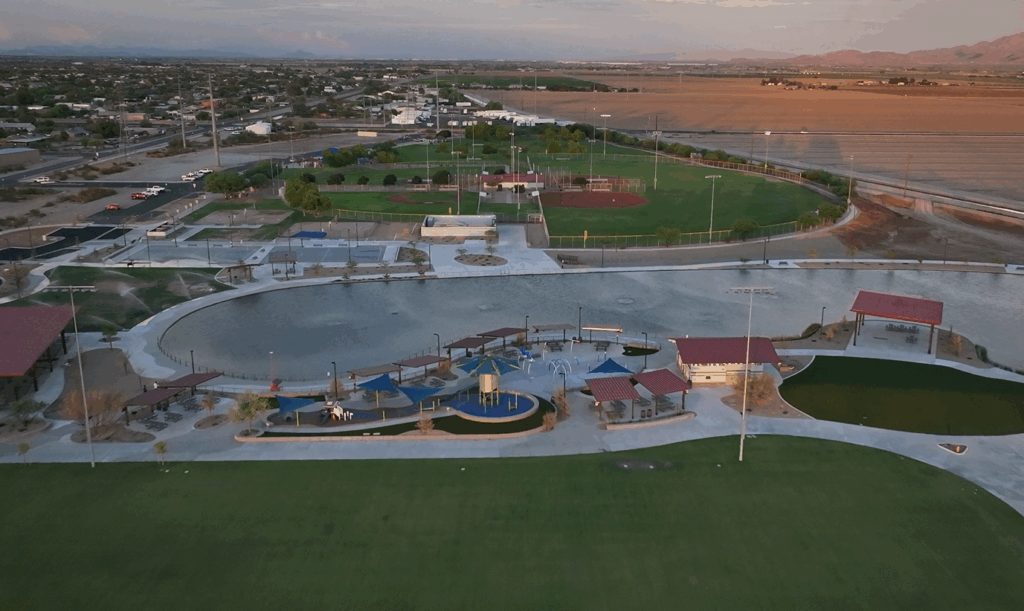I recently had the pleasure of watching the Buckeye Union Hawks take on the Verrado Vipers in a girls’ beach volleyball match at Sundance Park in Buckeye, Arizona. It was my first time watching beach volleyball at the high school level, and truthfully, the experience answered a lot of questions I didn’t even know I had.
At first glance, high school beach volleyball in Arizona might seem like a contradiction, and is probably one of the least likely sporting events you’d expect someone to attend. “Beach” volleyball in a landlocked, desert state during the months of March, April and May where temperatures begin to settle in the nineties?
Yeah, no way.
But after attending and covering several indoor girls’ volleyball matches the semester before in the cool Fall and Winter months, I was pleasantly surprised at the degree of nuance, competition and passion beach volleyball had to offer. I found myself wanting to learn more, and what I found is that the sport still struggles for resources, legitimacy and visibility compared to other sanctioned sports in the AIA (Arizona Interscholastic Association).
Not every high school has a beach volleyball team, which can make travel times and bus availability for games tedious to deal with. Even for the game I went to between Buckeye Union and Verrado, two schools located near each other in Buckeye, one of the teams was nearly late for gametime and had very limited time to warm up.
Furthermore, the nature of beach volleyball’s need to be played on a sand court adds additional challenges. Sand courts are often expensive and not worthwhile for high schools to build and maintain, forcing teams to share facilities, practice on makeshift surfaces that don’t replicate the true feel of the sport, or do what was done at my game: play at a public park.
And to be fair, Sundance Park was beautiful for that Wednesday afternoon match. It was definitely warm at around 92 degrees and both teams were wearing black uniforms for some reason, but there was plenty of shade and an occasional nice breeze coming off the nearby pond.
I can see that if those factors weren’t there then perhaps there would be cause for concern about player health in such a hot climate, but for this occasion, it passed the safety test.
But one pleasant afternoon shouldn’t obscure the bigger picture: how do we grow this thing? If the kids are showing up, competing hard regardless of the weather conditions, and are using it as a tool to become a better overall volleyball player and perhaps get recruited by schools, then what more can be done to have the sport be taken more seriously?
It’s a matter of equity and access. Like many youth sports, participation comes at a cost. Opting to play indoor club volleyball all-year round to avoid the need to play beach volleyball is a costly option that not everyone can afford. On top of that, public schools may not have the funding to prioritize a beach volleyball team, which leaves the kid who wants to play volleyball but can’t afford to out to dry.
What does this say about how one of the most popular girls’ sport is valued?
I wonder this especially considering that Buckeye Union and Verrado are public schools in some of the more lower-income communities of the Phoenix metro area, and their beach volleyball athletes greatly impressed me. Not only were they talented and displayed a genuine zeal for the game, but they also played with a hunger that suggested simply being able to play the sport meant a lot to them.
I might not be the biggest or most knowledgeable volleyball fan, but I could appreciate that level of discipline and work ethic that is often overlooked in a sport that doesn’t draw big crowds or headlines in the local newspaper.
I just hope that there’s not too many athletes like them out there that don’t have the choice to play.
The talent is out there. The desire is out there. But without resources like courts, coaches and transportation, some of those dreams never get a chance to take shape. And that’s not just a volleyball problem. That’s a systemic problem in high school sports, especially in underfunded communities where kids are already used to doing more with less.
Beach volleyball in Arizona may not have the name recognition or infrastructure of football or basketball, but the game has roots here. You can see it in the effort, in the chemistry, in the way teammates laugh between points and dive headfirst into the sand seconds later. The passion is real, and it deserves to be seen, nurtured and invested in.
It may not be like California or Florida, but Arizona has proven time and time again that it can adapt and redefine what is possible in a region where sustainable growth didn’t seem possible.
So yes, I left Sundance Park early that evening with sand in my shoes, a new appreciation for the sport, but most importantly, a lingering sense that these girls deserve better.


